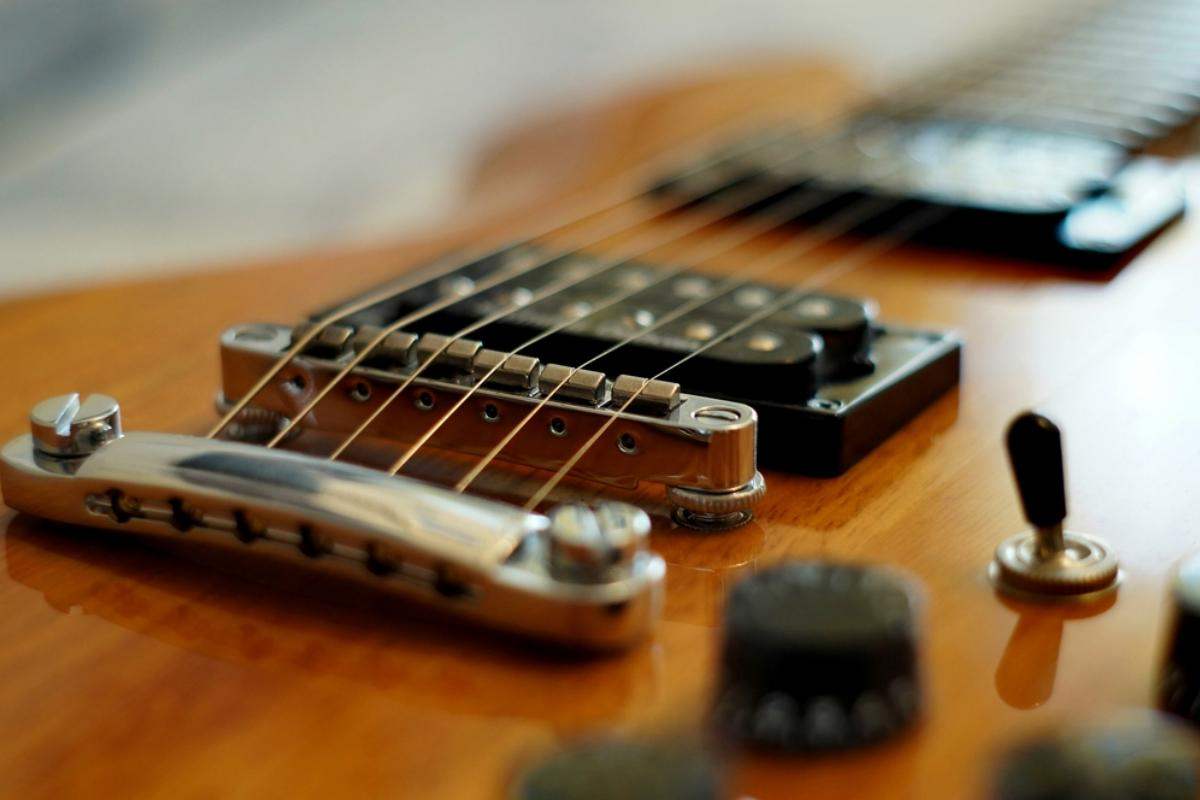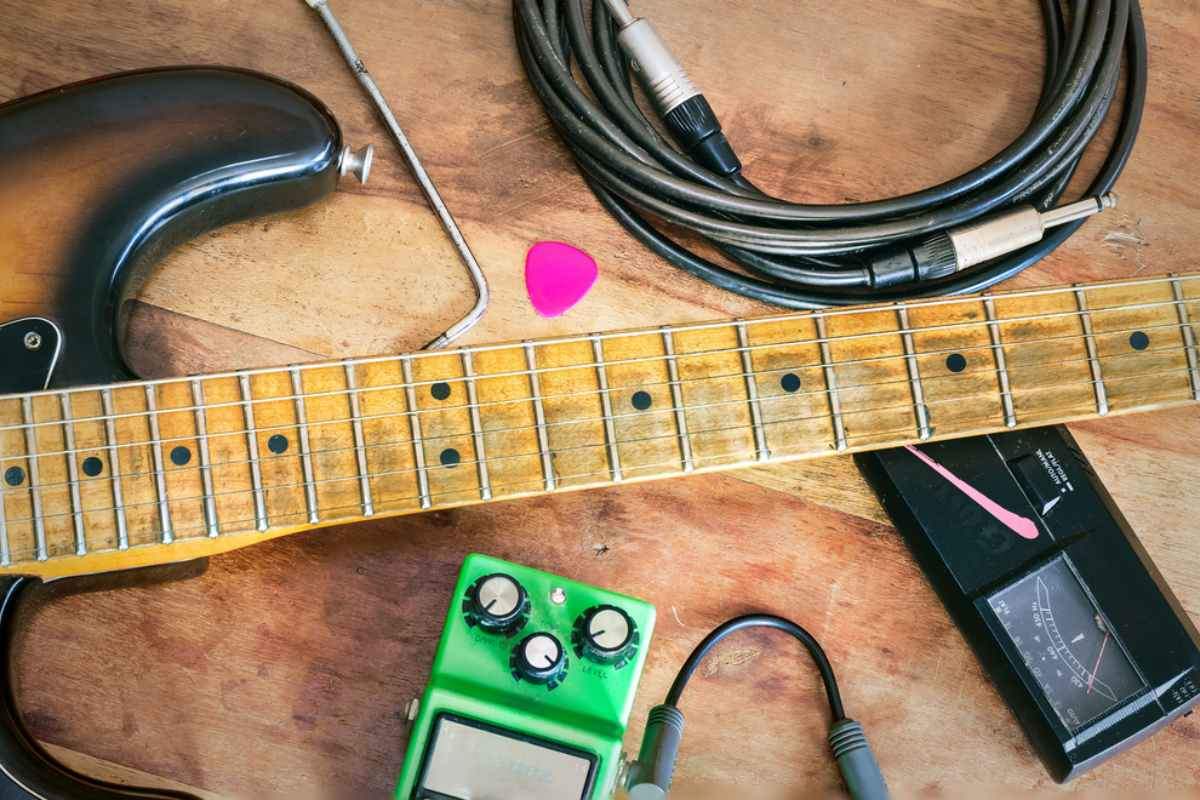The Stratocaster might be the best-selling electric guitar shape type in the history of humankind. But if you’ve played one, you’ll probably know there’s a B-side to those iconic tones. It’s the 60-cycle hum that those single pickups can generate.
Well, the good news is that there’s no need for you to surrender to that noise behind everything you play. In this piece, you’ll learn two ways to perform with your favorite guitar silently, or as quietly as possible.
Furthermore, this might be the right moment for you to dust off that made-in-Mexico Strat you’ve had forever and play it on your favorite tracks again.
Are you ready? Let’s do this!
How to Wire Your Stratocaster for Silent Performances
Hearing Jimi Hendrix, Stevie Ray, or even John Frusciante ripping the fabric of reality during a fuzz-infused solo is something we all love. But what happens when you take the distortion out of the equation and play extra clean?
Well, the 60-cycle hum makes its stellar appearance. It might add to the overall mojo of the tone but for some styles like neo-soul, funk, or pop, a glass-like clean tone is the way to go.
Here are two ways to achieve that with your Stratocaster.
The RWRP Middle Pickup Method
This method will not transform your Strat into a silent instrument but will give you positions 2 and 4 to play silently with.
The basis of how it works is very simple. When two pickups with reverse polarity are engaged together, they cancel each other’s hum, and guess what? Yes, you can no longer hear it. Therefore, what you need is to wire the middle pickup inverted to what the bridge and neck are in terms of polarity.
RWRP stands for Reverse Wiring/Reverse Polarity. That’s the name of the pickup you need.
I know what you’re thinking… how will I know if a pickup is RWRP with another one? Well, you must know a little bit about magnets.
So, my suggestion is the following:
- Remove the pickups from your guitar. Yes, all three of them.
- Compare the magnets putting them against each other in the right direction (top against top and bottom against bottom)
- Compare bridge to middle and neck to middle. Then, bridge and neck.
Here’s the way you can find out:
- If pickups repel each other (that means the magnets within the pickups), then you know they have the same polarity.
- If pickups attract each other, then you’ll know those have opposite polarity.
If your set happens to have one pickup with reverse polarity, that’s the one you should use as your middle pickup. Otherwise, if all three of them repel each other, it’s time to go shopping for a brand-new middle pickup that will repel the other two. You can just take them to the shop and repeat steps 2 and 3.
If you have a limited budget, you can also go DIY and do it this way:
Once you’ve installed the middle RWRP pickup, you can use those die-hard, unique Strat tones in position-2 and position-4 tones with zero to minimal hum.
Series Wiring for Noiseless Humbucking Sounds
If you’re lucky enough to have not one but various guitars in you’ll know that humbucker-equipped guitars are noiseless musical machines (that’s until you step on the distortion pedal, but that’s another story). Furthermore, the name of those pickups speaks for themselves, they’re called “Humbuckers”.
So, what if, with a little mod on your guitar, you could turn two of your pickups into a mighty humbucker and have a bassier sound with more gain and no noise or hum?
Sounds cool?
Well, before we dive deep into making the mod, what you need to understand is series/parallel operation.
- When two pickups are wired in series, they add to each other. This means that you can add one coil to another and have twice the gain and the push.
- When two pickups are wired in parallel, what you hear is the combination of the coils working at reduced power. In this case, you have that hollow, distinctive Strat sound without a big push in the volume.
When you pick up a regular Stratocaster guitar (SSS configuration), you have standard parallel wiring. The hot and the ground cable from each pickup is sent separately. When you change the wiring to series, the signal goes from one pickup’s ground wire directly into the other pickup’s hot wire. That way, you create a big pickup with the sum of the coils.
What’s the catch you might be wondering? Well, the catch is wiring this to have both sounds available. You can do it with a push/pull potentiometer, or you can install a DPDT switch.
Here’s an easy-to-do example of wiring a Stratocaster in series with a push/pull option.
Once you ignite the almighty humbucker configuration, you’ll be cooking with no hum in no time.
An Extra Tip: Shielding Makes a Difference
Before finishing this piece and sending you to think about which of the above seems like a better option for your guitar, let me also address one basic way of making your guitar quieter: shielding the cavities.
It will create a cage that can prevent your guitar’s body from turning into an antenna. This cage will reject all stray radio frequencies and interferences floating around your ax.
There are many options out there to do this, these are the main two in my opinion.
- Graphite paint – With this paint you can just paint the inside cavities of your Stratocaster. It’s super easy to apply but it’s hard to obtain and is expensive to purchase.
- Aluminum or copper tape – Although these are harder to install than just painting, they are cheaper, and you can buy enough for one guitar instead of a whole bucket.
Shielding doesn’t stop 60-cycle hum but it does wonders in reducing noises for any guitar.
Conclusion
I know that the 60-cycle hum is part of the Stratocaster’s mojo, sound, and magic. Yet, if you’ve ever tried recording one super clean or heavily distorted, you’ll know 60-cycle hum isn’t always the kind of mojo or magic you need.
These simple wiring mods will open a new world for your Strat and might make you fall in love with the instrument again. That’s what we do all this for, right? To enjoy playing our favorite guitar more every day.
Happy (silent) playing!
If you like this article, please share it!
Be sure to join our FB Group Guyker Guitar Parts & Accessories Community to share your ideas! You can also have connections with like-minded guitar players, Guyker updates as well as discounts information from our FB Group.





